Full text
PDF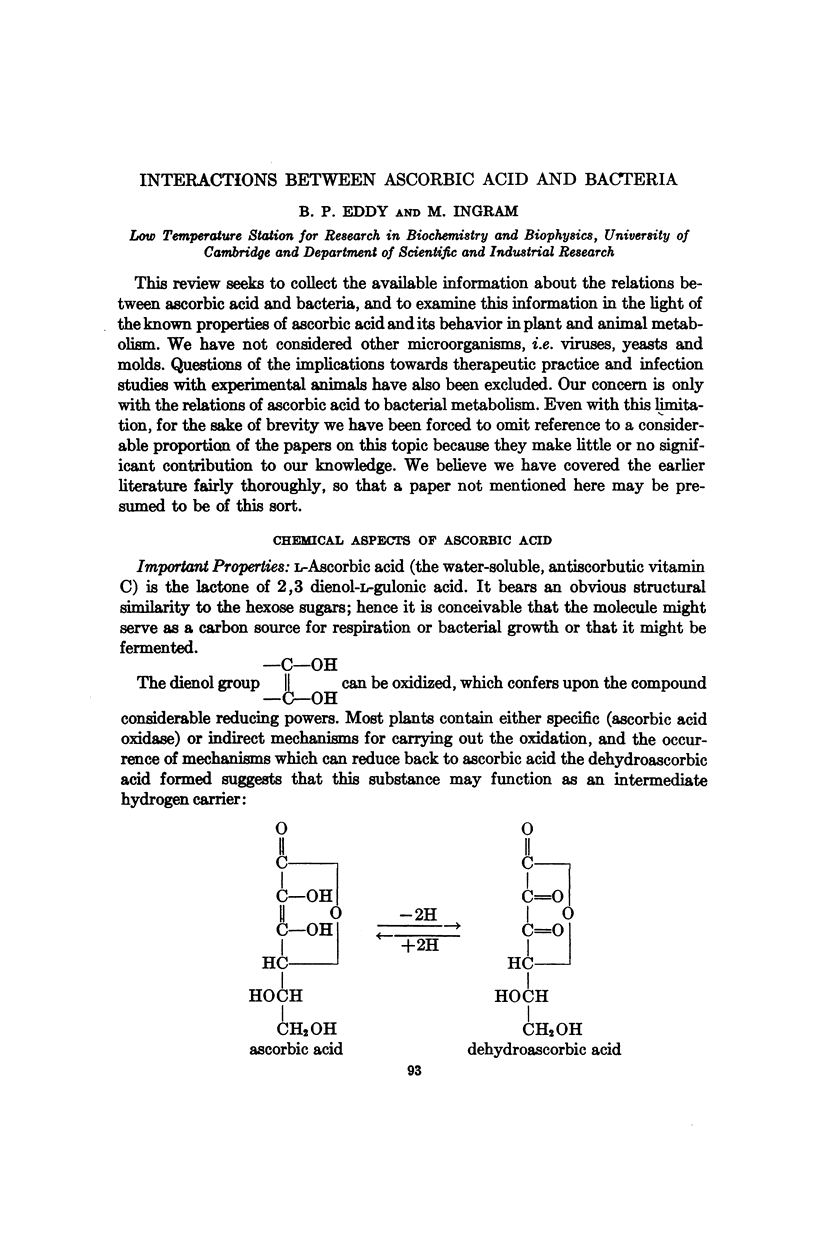
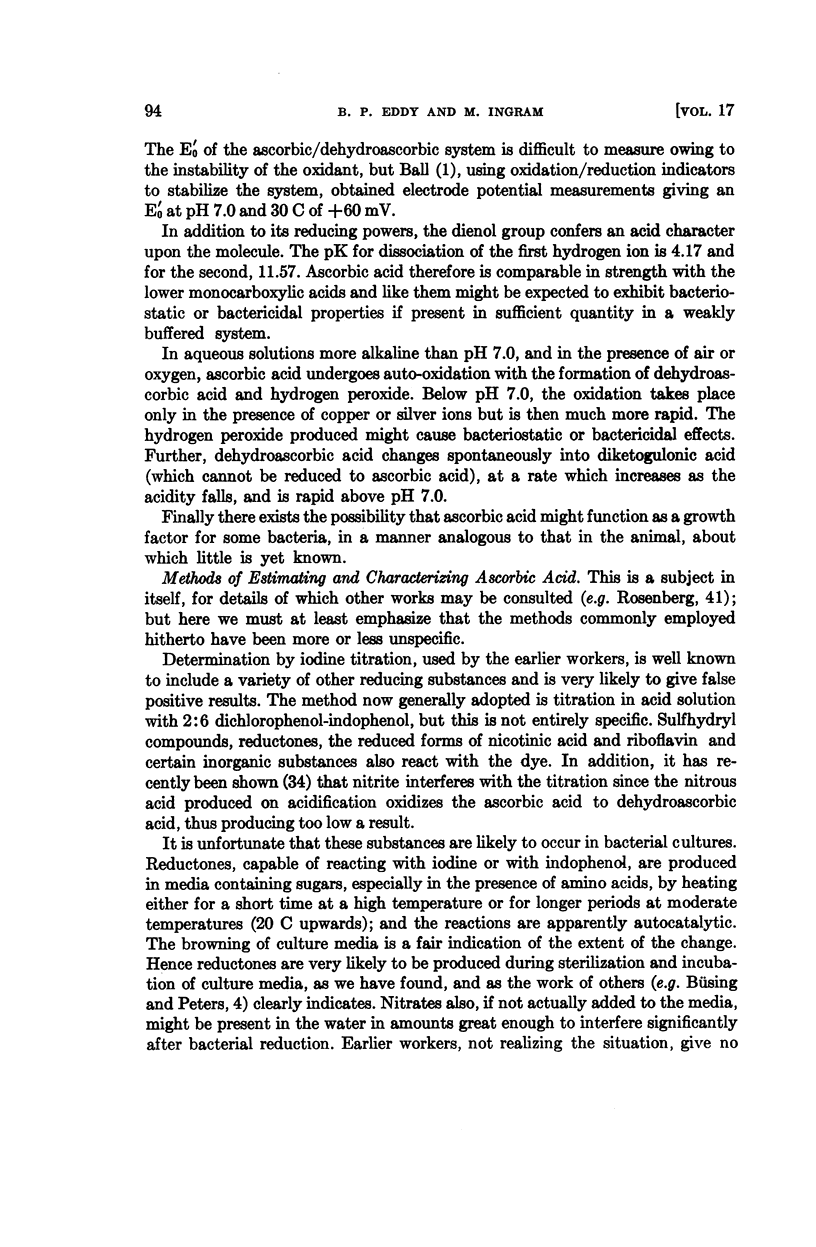
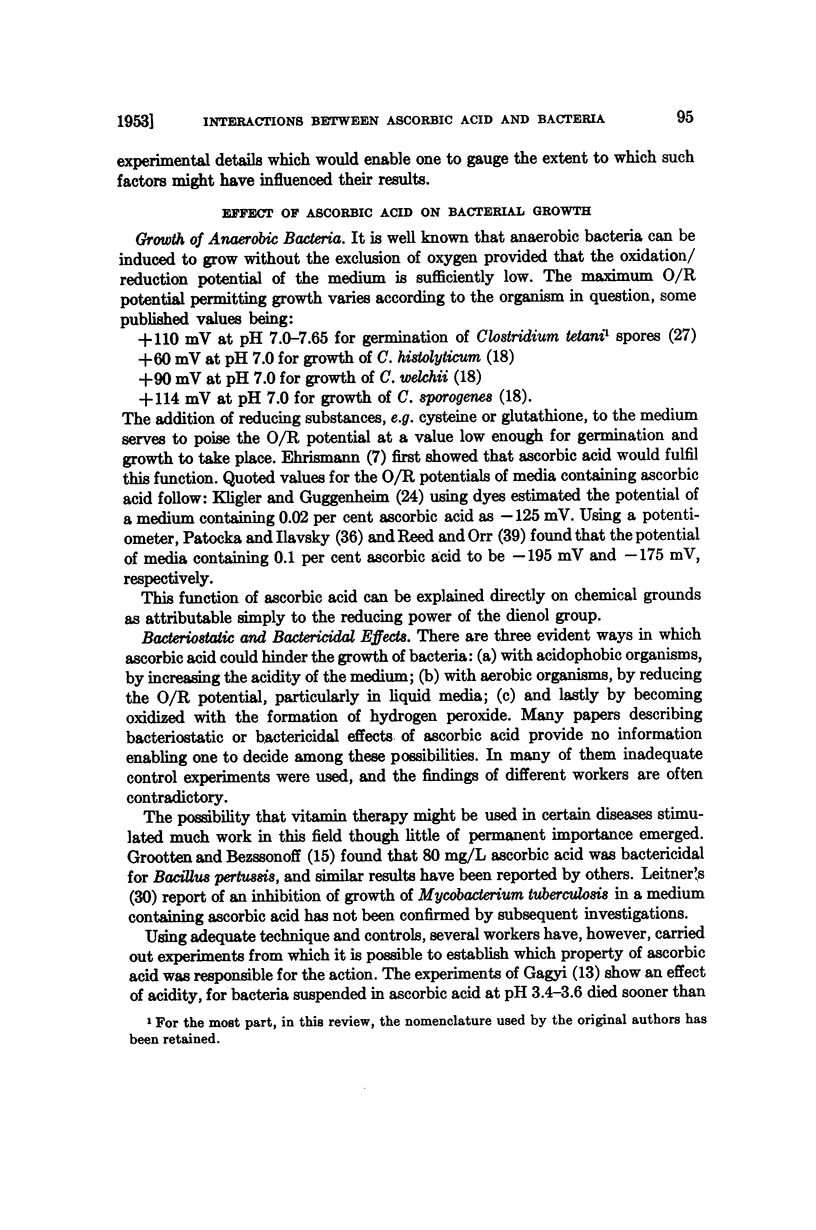
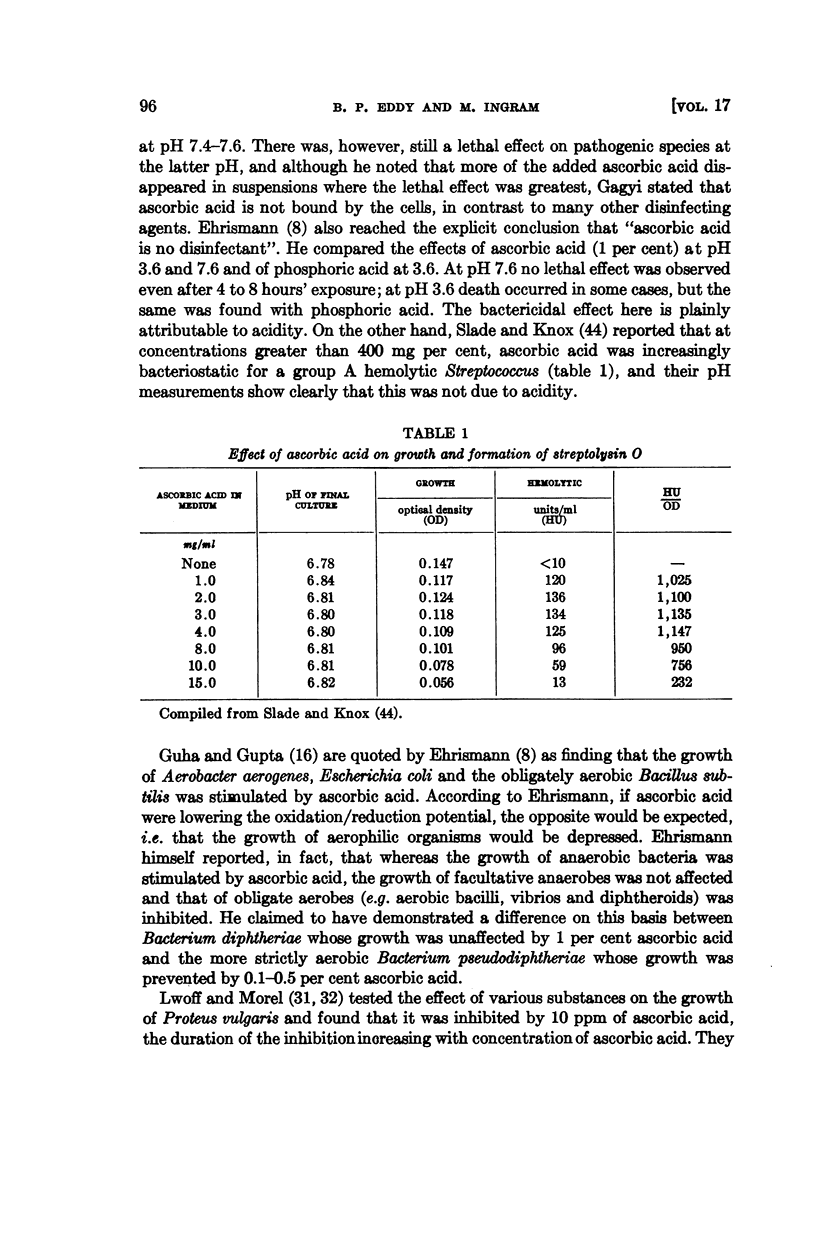
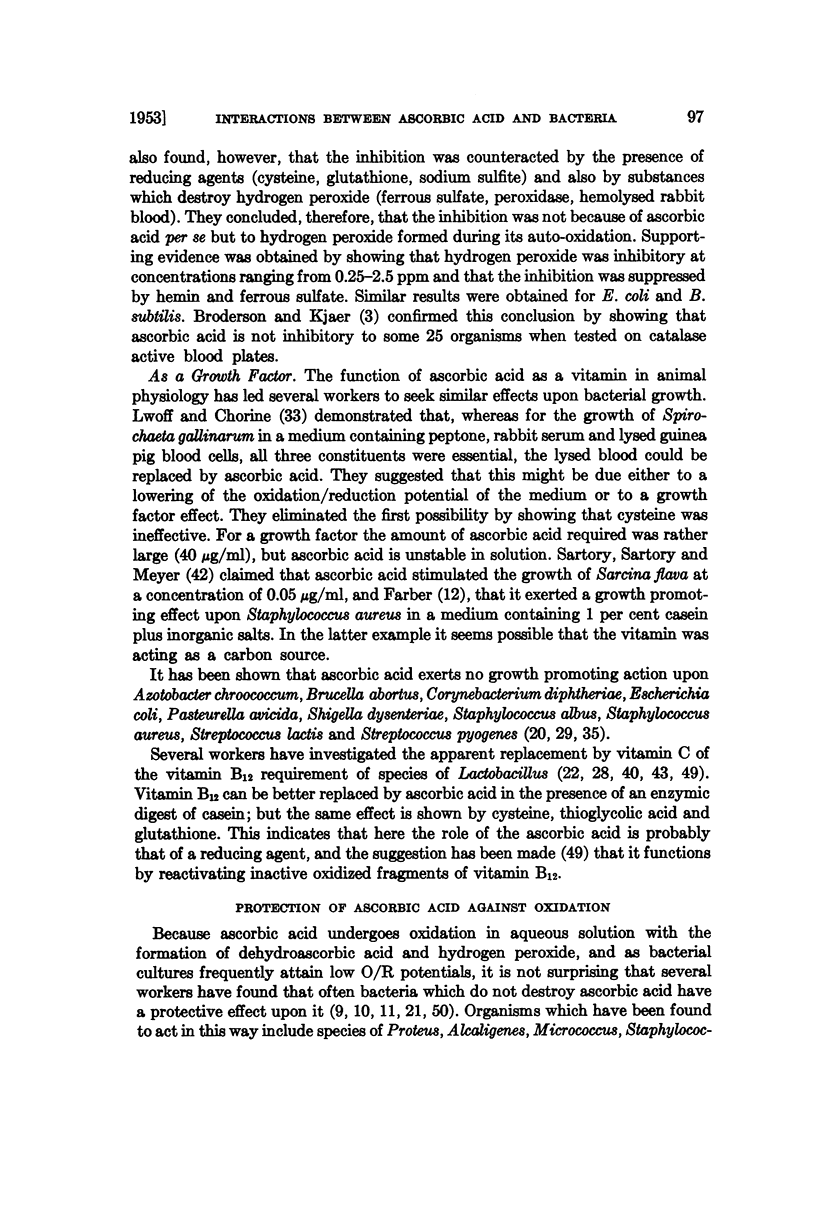
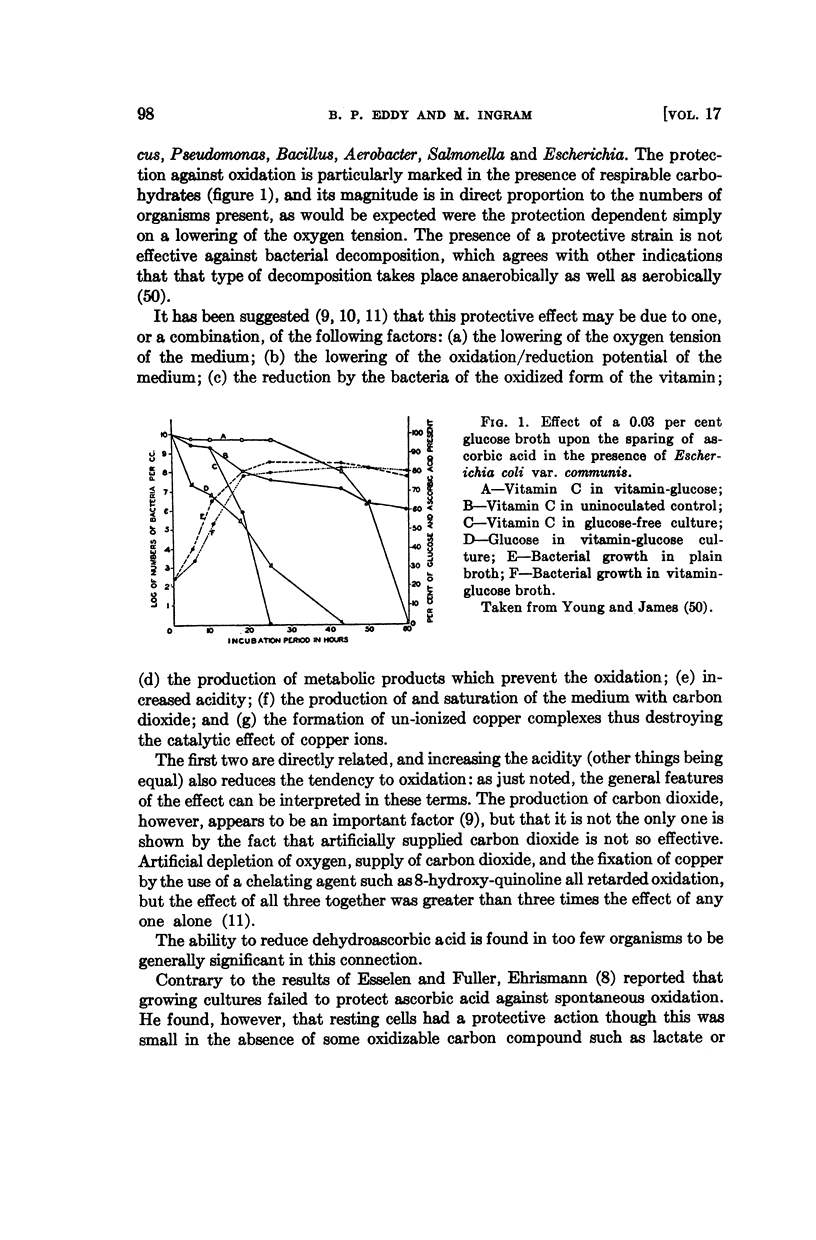
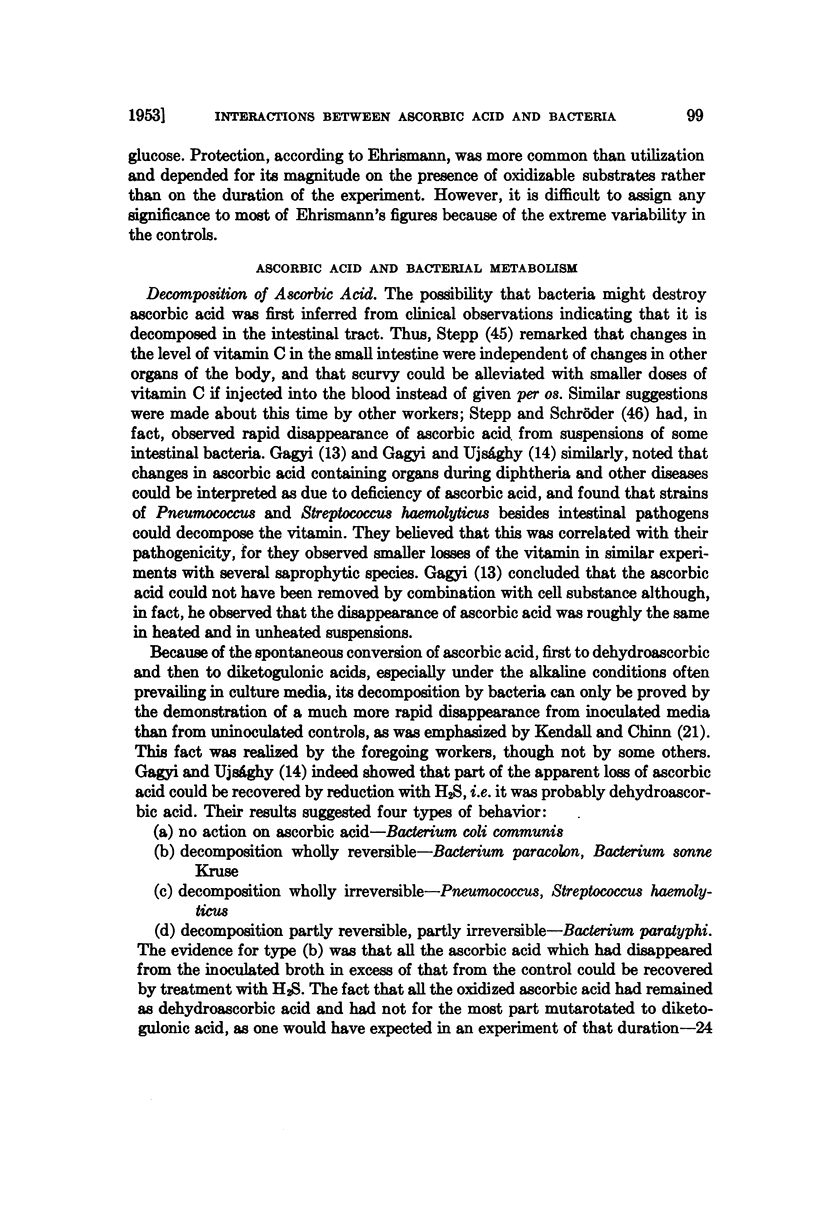
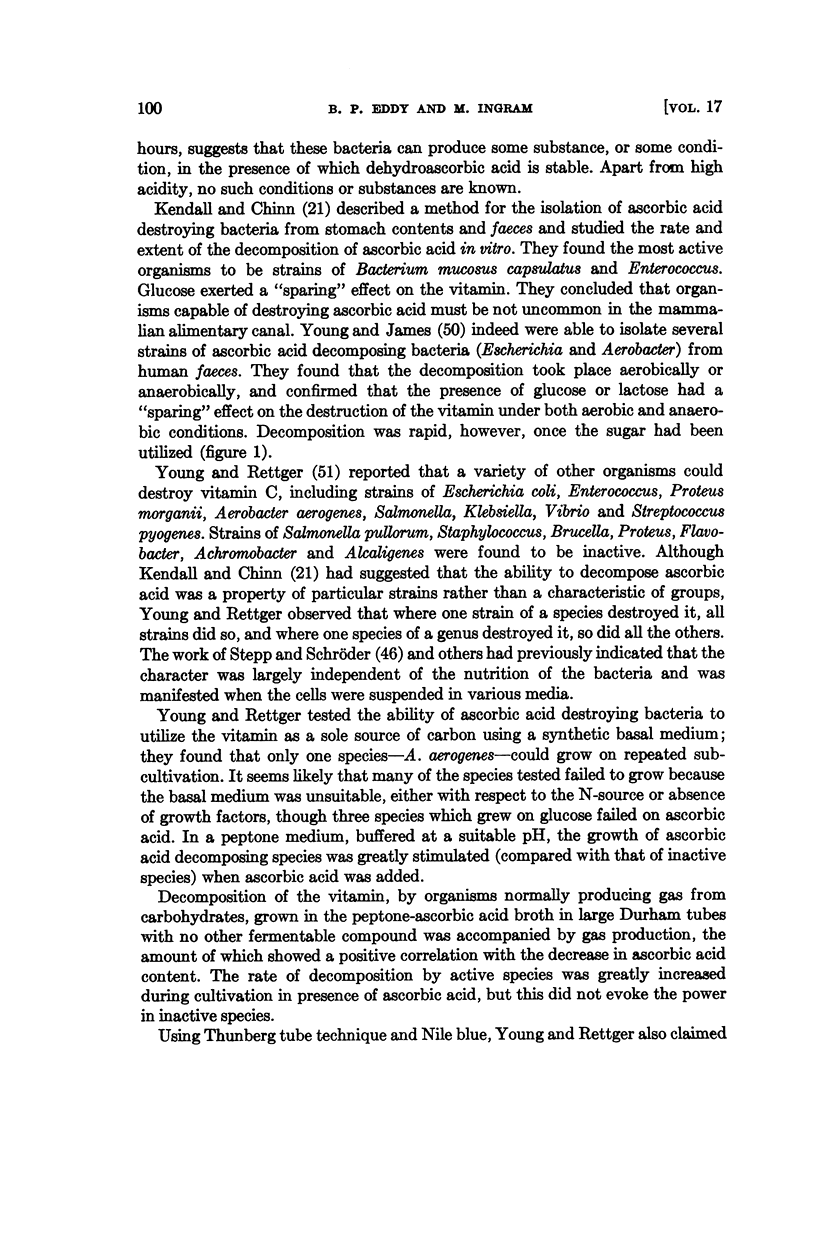
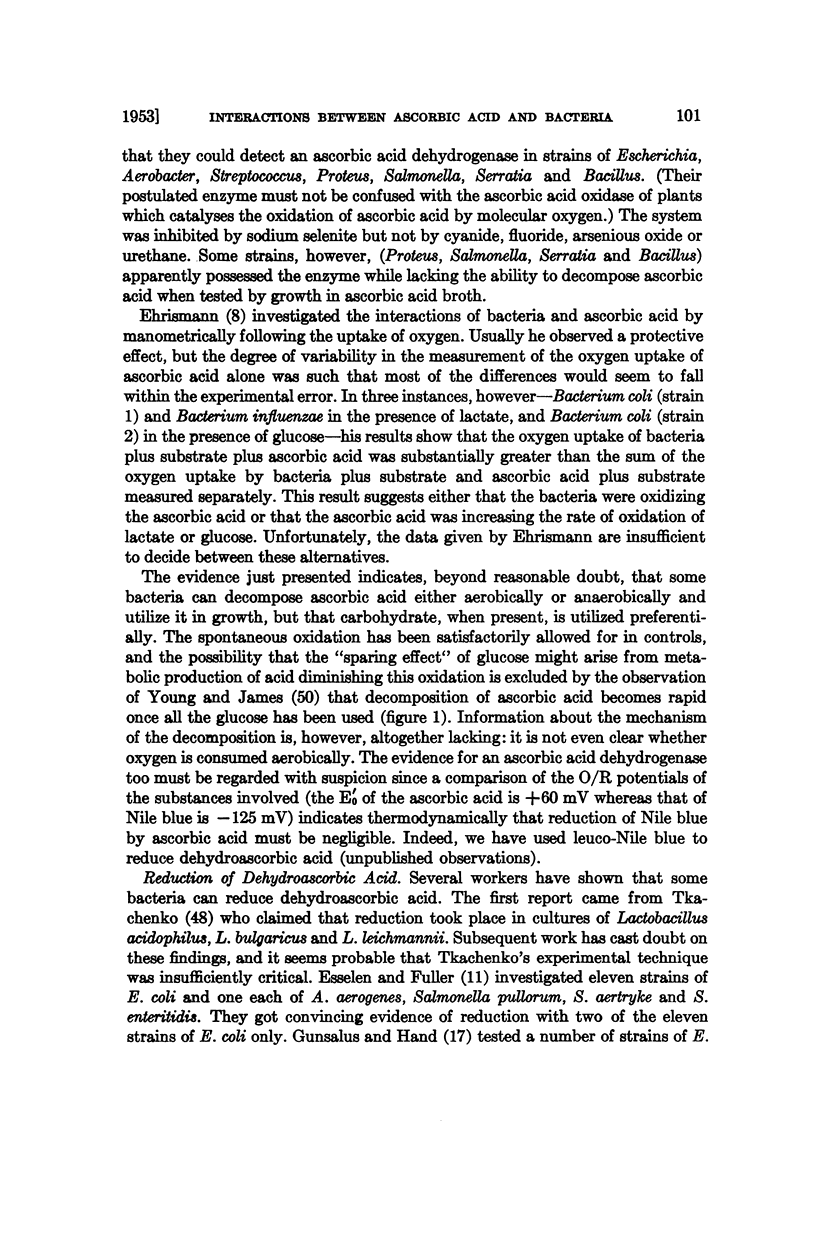
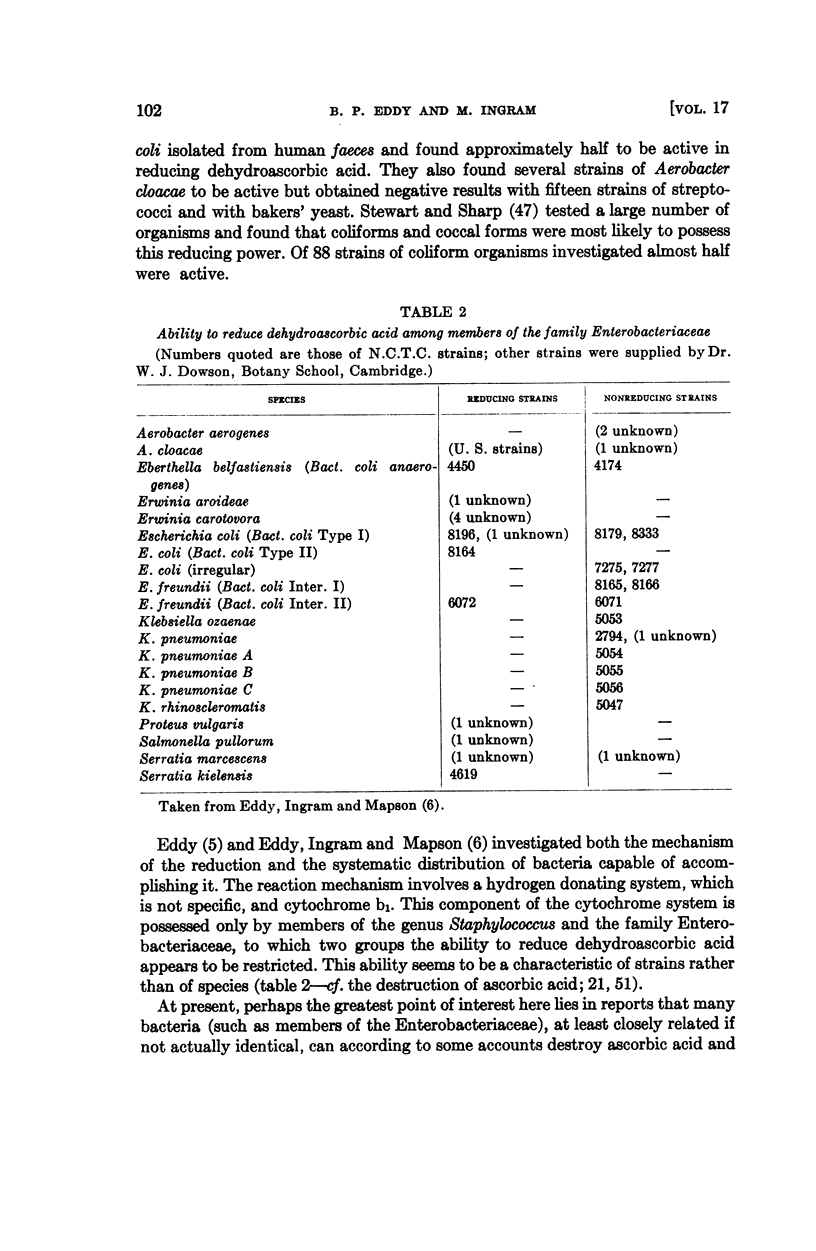
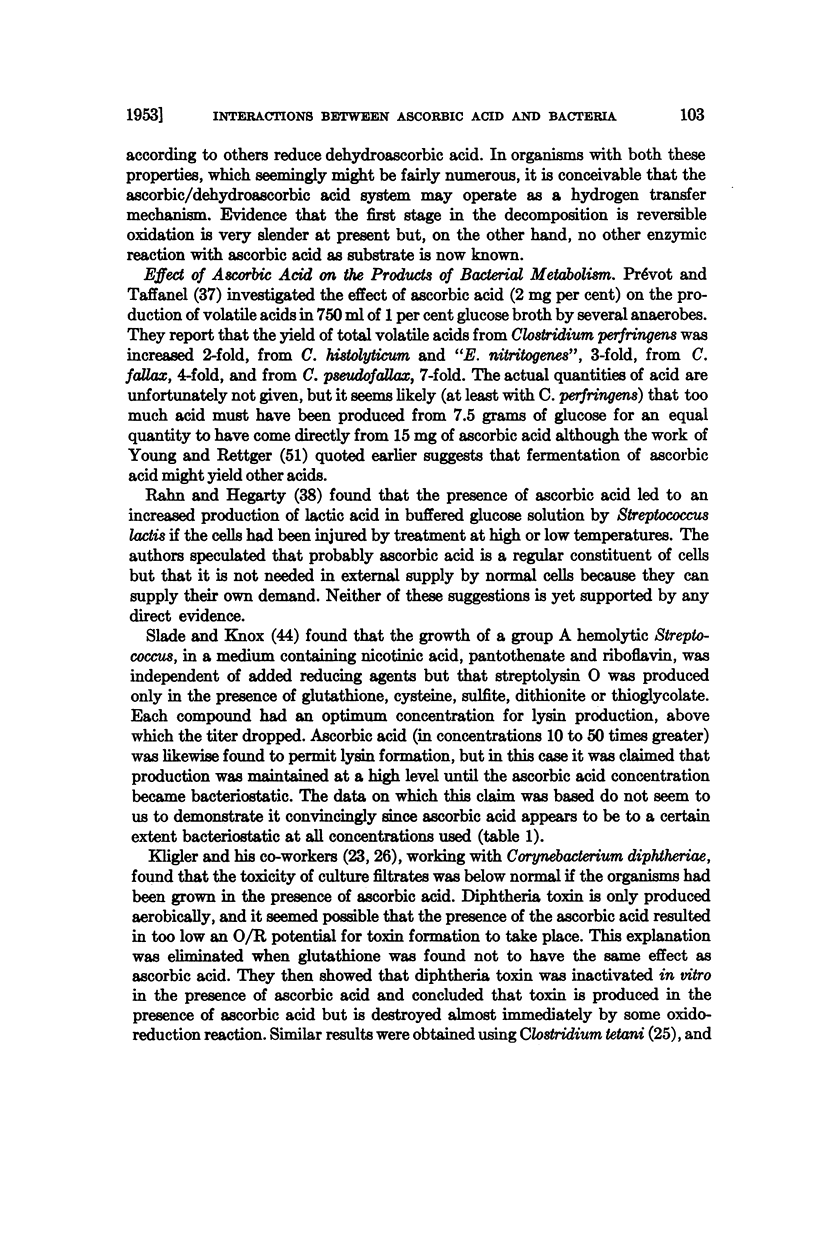
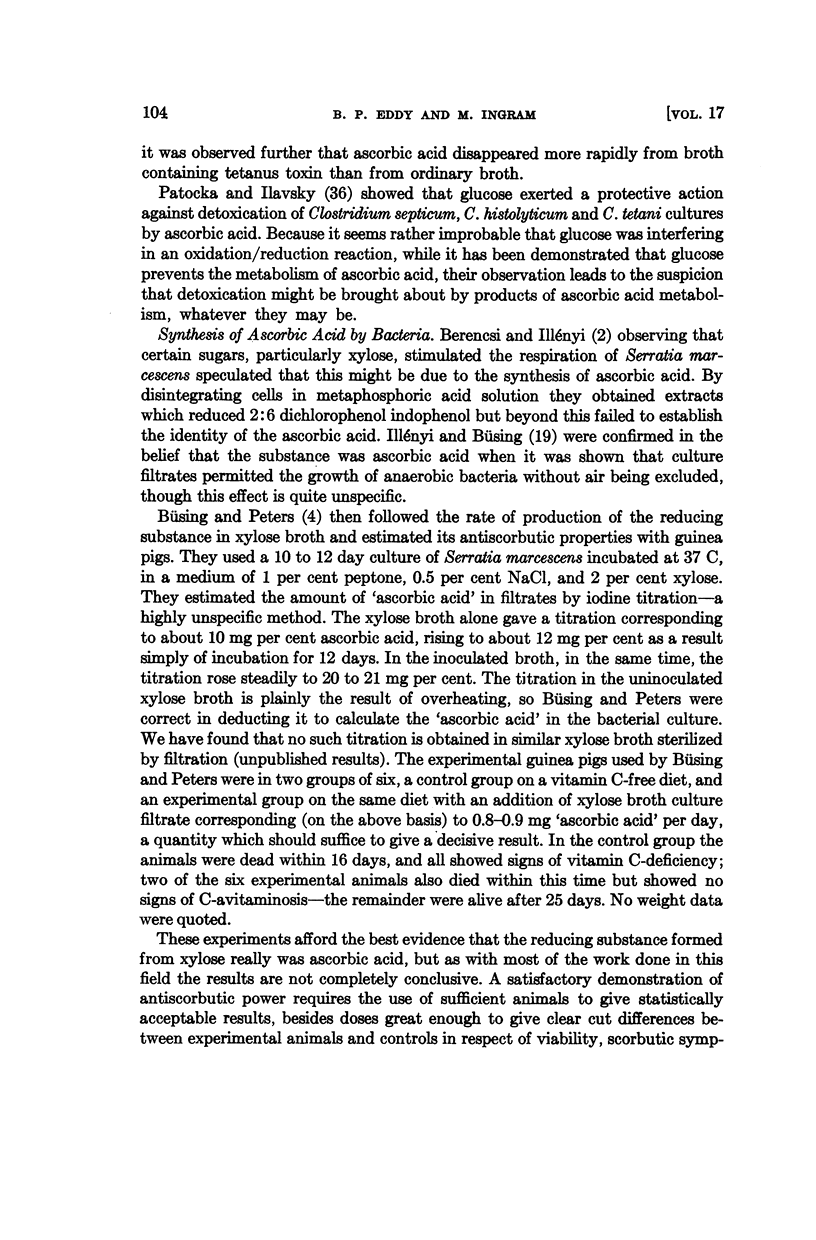

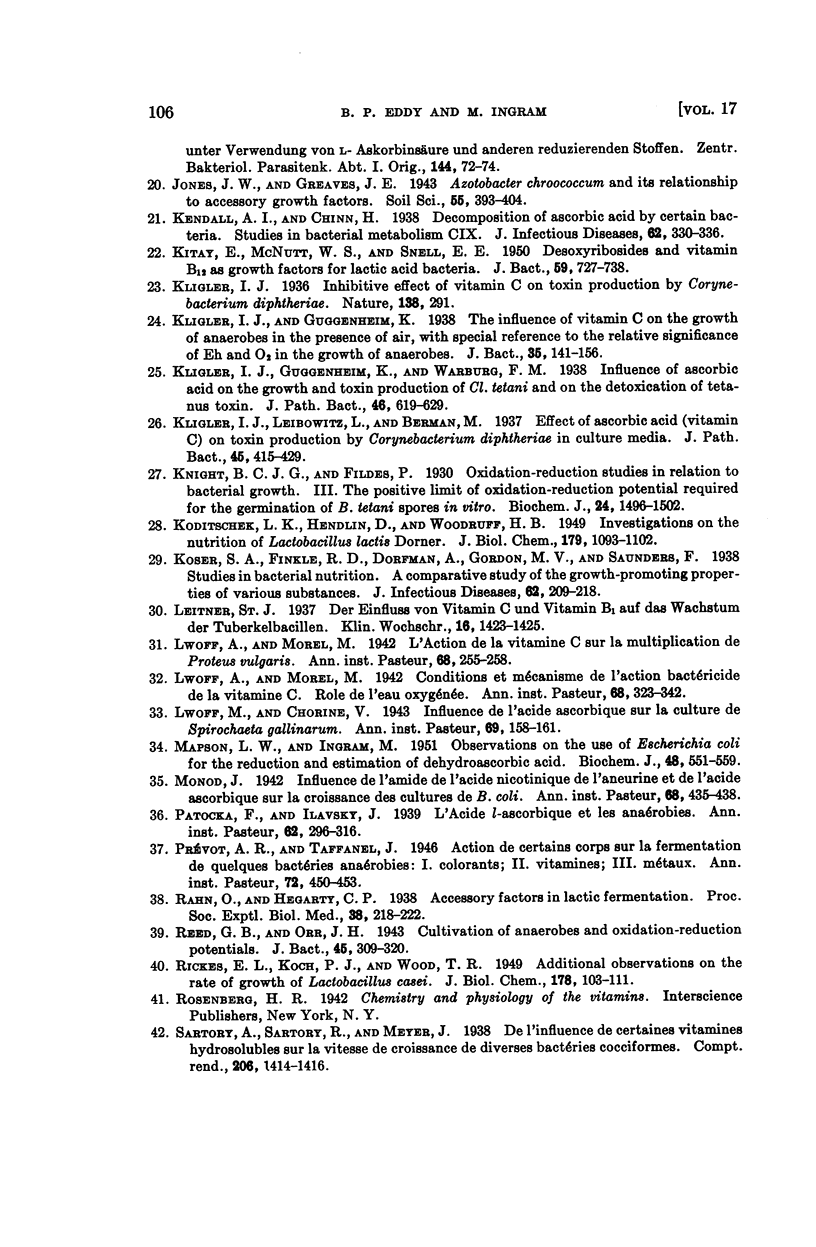
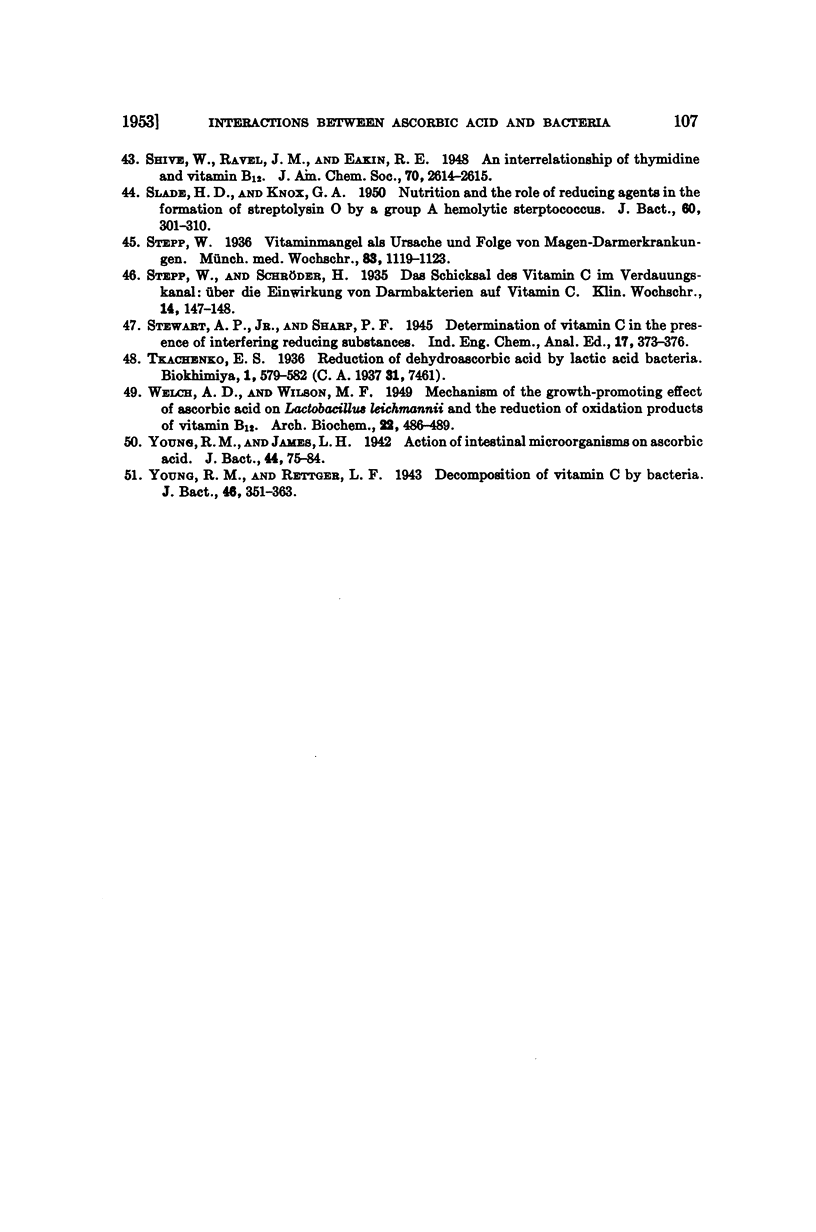
Selected References
These references are in PubMed. This may not be the complete list of references from this article.
- EDDY B. P., INGRAM M., MAPSON L. W. Reduction of dehydroascorbic acid by bacteria. 2. Role of cytochrome in hydrogen transport. Biochem J. 1952 Jun;51(3):375–379. doi: 10.1042/bj0510375. [DOI] [PMC free article] [PubMed] [Google Scholar]
- EDDY B. P. Reduction of dehydrascorbic acid by bacteria. I. Reducing mechanisms of Escherichia coli. Biochem J. 1952 Mar;50(5):601–603. doi: 10.1042/bj0500601. [DOI] [PMC free article] [PubMed] [Google Scholar]
- Esselen W. B., Fuller J. E. The Oxidation of Ascorbic Acid as Influenced by Intestinal Bacteria. J Bacteriol. 1939 May;37(5):501–521. doi: 10.1128/jb.37.5.501-521.1939. [DOI] [PMC free article] [PubMed] [Google Scholar]
- KITAY E., McNUTT W. S., SNELL E. E. Desoxyribosides and vitamin B12 as growth factors for lactic acid bacteria. J Bacteriol. 1950 Jun;59(6):727–738. doi: 10.1128/jb.59.6.727-738.1950. [DOI] [PMC free article] [PubMed] [Google Scholar]
- Kligler I. J., Guggenheim K. The Influence of Vitamin C on the Growth of Anaerobes in the Presence of Air, with Special Reference to the Relative Significance of Eh and O(2) in the Growth of Anaerobes. J Bacteriol. 1938 Feb;35(2):141–156. doi: 10.1128/jb.35.2.141-156.1938. [DOI] [PMC free article] [PubMed] [Google Scholar]
- Knight B. C., Fildes P. Oxidation-reduction studies in relation to bacterial growth: The positive limit of oxidation-reduction potential required for the germination of B. tetani spores in vitro. Biochem J. 1930;24(5):1496–1502. doi: 10.1042/bj0241496. [DOI] [PMC free article] [PubMed] [Google Scholar]
- MAPSON L. W., INGRAM M. Observations on the use of Escherichia coli for the reduction and estimation of dehydroascorbic acid. Biochem J. 1951 May;48(5):551–559. doi: 10.1042/bj0480551. [DOI] [PMC free article] [PubMed] [Google Scholar]
- Reed G. B., Orr J. H. Cultivation of Anaerobes and Oxidation-Reduction Potentials. J Bacteriol. 1943 Apr;45(4):309–320. doi: 10.1128/jb.45.4.309-320.1943. [DOI] [PMC free article] [PubMed] [Google Scholar]
- SLADE H. D., KNOX G. A. Nutrition and the role of reducing agents in the formation of streptolysin O by a group A hemolytic streptococcus. J Bacteriol. 1950 Sep;60(3):301–310. doi: 10.1128/jb.60.3.301-310.1950. [DOI] [PMC free article] [PubMed] [Google Scholar]
- Young R. M., James L. H. Action of Intestinal Microörganisms on Ascorbic Acid. J Bacteriol. 1942 Jul;44(1):75–84. doi: 10.1128/jb.44.1.75-84.1942. [DOI] [PMC free article] [PubMed] [Google Scholar]
- Young R. M., Rettger L. F. Decomposition of Vitamin C by Bacteria. J Bacteriol. 1943 Oct;46(4):351–363. doi: 10.1128/jb.46.4.351-363.1943. [DOI] [PMC free article] [PubMed] [Google Scholar]


